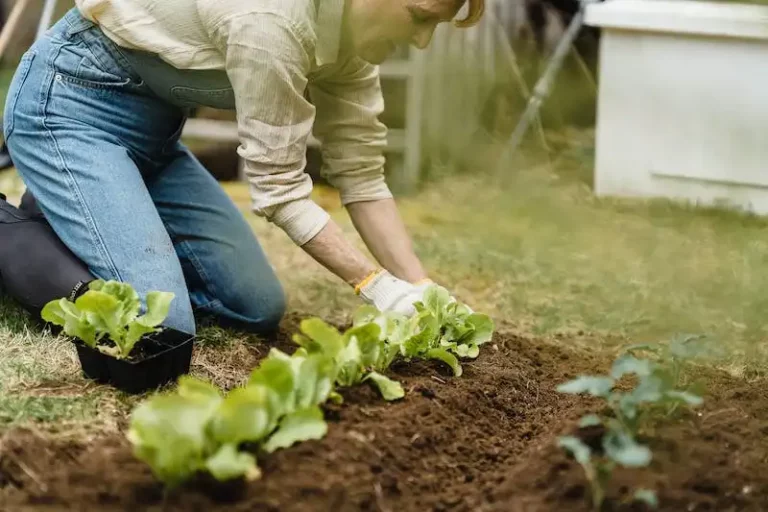If you love nature and outdoor activities, you have probably heard about the U S Forest Service. This agency is a part of the United States Department of Agriculture and its primary mission is to manage and protect the nation’s forests and grasslands. With over 193 million acres of land under their care, the U S Forest Service plays a crucial role in preserving the country’s natural resources and ensuring their sustainable use for future generations.
One of the most iconic images associated with the U S Forest Service is a beautiful meadow, full of vibrant colors and blooming flowers. These meadows are probably not what you would expect, as they are carefully managed to provide optimal conditions for various plant species. Each meadow has its unique requirements, and the U S Forest Service serves as a guide on how to best cultivate and protect these natural habitats.
One common plant that thrives in meadows across the United States is the California poppy (Eschscholzia californica). These bright orange flowers are a symbol of the state and are thought to bring good luck. The U S Forest Service has established guidelines on how to sow and care for these poppies, ensuring their continued growth and vibrant blooms.
When it comes to planting California poppies, the process is relatively easy. The seeds can be bought online or obtained from garden centers. They are usually sold in compact packets that contain a large number of seeds, making it easy to sow them in larger areas. The poppies prefer full sunlight and well-drained soil, and they generally do not require excessive watering or maintenance.
Once you have obtained the California poppy seeds, you can sow them directly in the soil. It is best to do this in the fall, as the poppies need a period of cold dormancy to germinate. However, you can also sow them in the spring. Just make sure to plant them outside when the danger of frost has passed and the soil has warmed up.
When planting the poppy seeds, you should clear the area of any weeds or grass. Then, sow the seeds thinly and cover them with a thin layer of soil. Water them gently and keep the soil moist until the seeds germinate. Once the seedlings appear, you can thin them out to prevent overcrowding. This will allow each plant to have enough space to grow and flourish.
As the California poppies start to grow, you might have some questions about their care and maintenance. The U S Forest Service can be a great resource for answering these questions and providing guidance on how to ensure the health and longevity of your poppy plants. It is important to note that the California poppy is an edible and botanical wonder and their slow-release sorbet fills the air each night with the sweet scent of their orange blossoms.
So, if you’re looking to bring a touch of California into your garden, consider planting California poppies. With their vibrant blooms and ease of care, they are a popular choice for gardeners across the country. Whether you have a meadow or a small spot in your yard, these poppies will bring beauty and joy to your outdoor space. Just make sure to follow the guidelines provided by the U S Forest Service, and you’ll have a garden full of these stunning flowers in no time.
How to grow California poppy
If you’re looking for a vibrant and low-maintenance flower to brighten up your garden, the California poppy (Eschscholzia californica) is the best choice. This native wildflower is generally easy to grow and adds a pop of orange and yellow to any sunny spot. Here are some tips on how to successfully grow California poppy:
- Choose the right location: California poppies thrive in full sun, so find a spot that receives at least six hours of direct sunlight each day. The soil should be well-drained and not too rich. Avoid planting them in areas that are prone to overcrowding as this can lead to disease and plant stress.
- Prepare the soil: California poppies aren’t too picky when it comes to soil requirements. However, they do best in loose, sandy soil. If the soil in your garden is heavy or clayey, consider adding some organic matter, such as compost or well-rotted manure, to improve drainage and enrich the soil.
- Planting the seeds: California poppies can be directly sown into the ground or started indoors. If you’re planting them directly outside, scatter the seeds on the prepared soil and lightly cover them with a thin layer of soil. Water the area gently to keep the soil moist but avoid overwatering, as this can lead to root rot. If you choose to start the seeds indoors, sow them in small pots or seed trays and transplant them outside once they’ve grown a few inches tall.
- Watering and care: Once established, California poppies are fairly drought-tolerant and don’t require much watering. However, during hot and dry periods, make sure to water them regularly, especially if you notice wilting or drooping leaves. In general, they do well with a deep watering once a week.
- Spacing: When planting California poppies, consider the space they’ll need to grow. These flowers can spread and self-seed quite easily if not properly managed. To prevent overcrowding, thin out the seedlings by spacing them about 30cm apart.
- Pests and issues: California poppies are generally resistant to pests and diseases, but they can occasionally be affected by thrips. If you notice damage to the flowers or leaves, look for tiny insects that jump or fly away when disturbed. To control thrips, you can apply an organic insecticidal soap or use neem oil.
- Uses and links: California poppies have been used for various purposes throughout history. They’re not only popular for their vibrant flowers but also for their medicinal properties. You can find more information and tips on growing California poppies online, as well as links to seed suppliers and gardening resources.
- Hardiness zones and dormant period: California poppies are hardy in USDA zones 7-10 and go dormant during hot summer months. If you live in a colder climate, you can still grow California poppies as annuals or in containers that can be brought indoors during the winter.
By fully caring for your California poppies, you can enjoy their beautiful flowers throughout the growing season. Whether you’re planting them from seeds or buying established plants, these low-maintenance flowers are a great addition to any garden or wildflower area.
How to grow California poppies
Fertilizing is not necessary for California poppies, as these plants are adapted to the nutrient-poor soils of the state. In fact, excessively fertile soils can cause the poppies to become overcrowded and flop over.
When growing California poppies from seed, it is important to choose a well-draining soil. If your soil is heavy or poorly draining, consider amending it with organic matter or perlite to improve drainage.
To plant California poppies, scatter the seeds lightly on top of the soil, as the seeds need light to germinate. Alternatively, you can press them lightly into the soil, but be careful not to bury them too deep.
California poppies are known for their vibrant colors, which range from gold to orange. They are also named the “sunshine state” flowers.
If you’re looking for advice on growing California poppies, the U.S. Forest Service recommends these steps:
- Choose a well-drained location.
- Prepare the soil by removing any weeds or grasses.
- Scatter or lightly press the seeds into the soil.
- Water the seeds regularly, but be careful not to overwater.
- As the plants grow, thin them out to prevent overcrowding.
- California poppies self-seed, so they will come back year after year if allowed to go to seed.
California poppies are a popular choice among gardeners due to their low maintenance and beautiful blooms. There are many varieties of California poppies available online, with different hues and flower shapes to choose from.
It’s always a good idea to follow the specific growing instructions provided with the seeds or plants you purchase, but with a little care and attention, you can enjoy the beauty of California poppies in your own garden.
California poppies jump links
Requirements: California poppies (Eschscholzia) are easy to grow and have few requirements. They prefer full sun and well-draining soil, but can tolerate a variety of soil types. They are drought tolerant once established, but regular watering is recommended to keep the plants healthy.
Tips to help them survive: To prevent the flowers from wilting excessively in hot weather, it is best to water the plants regularly. Additionally, it is important to plant the seeds lightly and thin the plants as needed to allow them room to grow.
Varieties: California poppies come in a variety of colors and hues, including orange, yellow, and red. They are known for their bright and cheerful appearance, and can add a pop of color to any garden.
Pests and diseases: California poppies are generally resistant to pests and diseases. However, gardeners should watch out for aphids, which can sometimes be a problem. If aphids are present, they can be controlled with insecticidal soap or by spraying the plants with a strong stream of water.
Container gardening: California poppies can also be grown in containers. When growing in containers, it is important to provide a well-draining soil and to water regularly. Containers should be placed in a sunny location to ensure the plants receive enough sunlight.
Caring for California poppies: California poppies are low-maintenance plants and require little care. They do not require fertilizing and can be left to grow naturally. Deadheading the flowers will encourage the plants to produce more blooms.
Additional advice: If you are looking to grow California poppies, it is best to start with seeds. The plants are easy to grow from seed and can be sown directly in the garden or started indoors and then transplanted. It is always a good idea to check with your local gardening center or online resources for specific growing instructions for your area.
Where to find them: California poppy seeds are widely available online and in gardening stores. They are a popular choice for growing wildflowers and can add a vibrant touch to any garden.
If you have any questions about growing California poppies or where to find them, be sure to reach out to your local gardening center or ask fellow gardeners for advice. The beauty and vibrancy of these flowers are sure to brighten up any garden.

